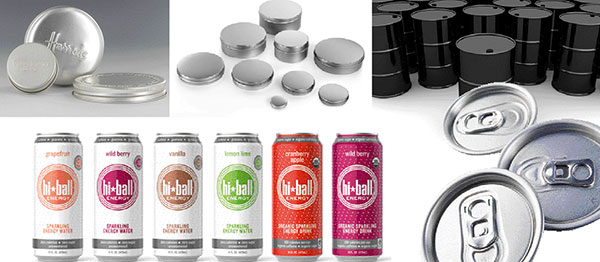Metal packaging – Data 2013
FACTS AND FIGURES Size of the Italian market, prospects, innovation and improvements in the performance of aluminum and steel packaging intended for food and non-food. Plinio Iascone
Metal packaging has a long history behind it: the use of steel (tinplate) harks back to the beginning of the nineteenth century, while the use of aluminum is dated “late nineteenth century.”

Steel packaging
Italian steel packaging production in 2012 declined by 5.3% (751,000 t), featuring a turnover of 1,460 mln euros, an increase of 3.5% compared to 2011.
Between 2000 and 2007 - the year before the global economic crisis - the manufacturing sector showed a substantial stability in production (referring to figures in tons).
Considering the significant drop in the average weight of about 30% in all steel packaging categories, the growthrate can be estimated as being around 1% per year.
According to a first preliminary balance, 2013 is seen to have ended with a contraction in domestic demand of 3-4%, a decline of about 17% of imports and an approximate 4% increase in exports. Production should have ended the year with a drop of about 2%.
Steel packaging can be divided into two areas: tinplate packaging and large steel drums.
Tinplate. In this area, production for 2012 amounted to 656,000 tons. Here packaging can be divided into different categories according to target areas.
The most important area in terms of quantity is that of the open top (food packaging), that accounts for 44% of total production: these are intended for the canned preserves (vegetables, ichthyic and fish products, pet food, olive and seed oil, etc.).
In terms of quantities produced this is followed by “general line” packaging, ie for chemical - petroleum products (26%), used to contain paints, lubricants, inks, etc.
Another area of application is that of closures, crown caps and twist-off capsules, that overall accounts for 14.7% of production. Some 60-70% of closures are traditionally exported.
Spraycans have a market share of 4%, while the remaining 11.3% of tinplate packaging is comprised by “fancy” tins (containers for biscuits, chocolates, tennis balls etc.) as well as the production of semi-finished products (lithographed sheet foil and covers for export).
Sheet steel. In 2012 production figures for large steel drums (in cold processed non tin coated sheet metal) stood at approx. 95,000 tons, down 5% on the previous year.
Exports ended the year substantially at the levels reached in 2011. Imports continue to involve extremely limited amounts. Domestic demand stands at 86,000 tons, down 6.5% compared to 2011. The most commonly used type of drum is the 200 kg capacity (60% of use); followed by the 100 and 300 kg capacities.
The drums are used primarily in the chemical and food industries; in the latter case they are used for storing products awaiting packaging preceding distribution.
Aluminium packaging
For aluminium packaging 2012 was also a difficult year, showing a 3% decrease in production and turnover of 2,390 mln euros, up 4% compared to 2011.
Over the last decade the aluminium packaging industry has shown a 2.5% annual average growthrate in activity in terms of weight.
Considering the reduction in the average weight of different types of packaging, the growthrate can be put at an annual average of 3.5%.
Over the years the development of particular alloys has enabled the creation of extremely thin gauges, which have enabled various new applications in the packaging field, both in terms of containers and flexible converter packaging. Aluminum laminates used in packaging production can be listed as follows: thin foil (less than 200 microns), can stock and pads:
In particular aluminium for producing packaging comprises:
- can stock used to produce beverage cans;
- foil stock, for producing foil as well as capsules;
- can body for food cans;
- pads used for spraycans.
The different products comprise countless alloys that vary according to the type of production and the various uses.
In 2012 Italian aluminum packaging production reached 170,300 tons, comprising 103,000 tons of packaging containers, closures, trays and foil for industrial wrapping and 67,300 tons of foilfor converting.
Exports account for a sizeable share, covering approximately 49% of output. Imports in turn account for 25% of consumption.
Looking at packaging in terms of tons, one has the following breakdown:
- containers 21% (beverage cans, food tins, spraycans and flexible tubes);
- closures 12.5%
- food trays 9%;
- wrapping foil 14.6%;
- converting foil 39%;
- other 3.9%.
Container production is as follows: beverage cans 61%, food packaging cans (ichthyic and fish products, meat, petfood etc...) 15%, flexible tubes 12% and spraycans 12%.
A first preliminary balance for 2013 suggests that aluminum packaging concluded the year with a drop in production of 4-5%, mainly driven by the sharp decline in exports, set against a slight increase in imports. Domestic demand also shows growth, though limited to 1-1.5%.
Plinio Iascone
Istituto Italiano Imballaggio




















